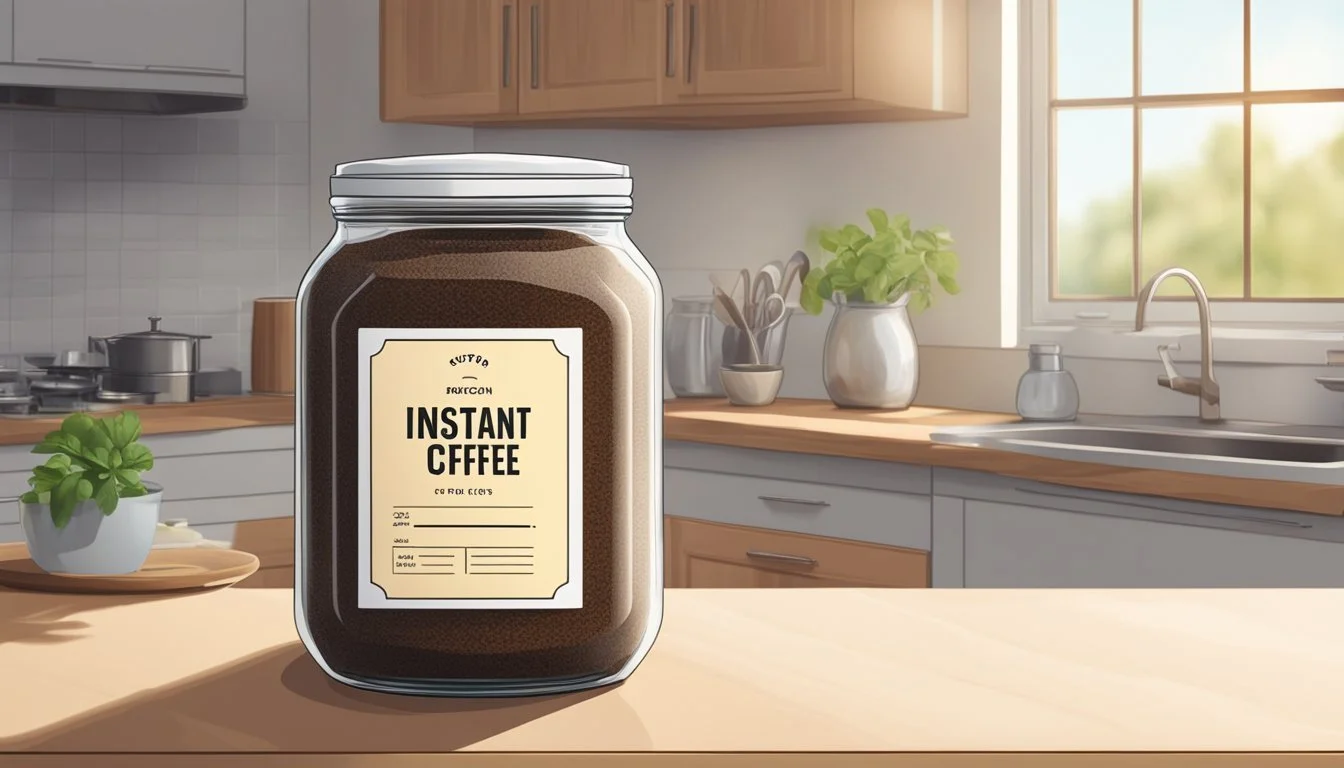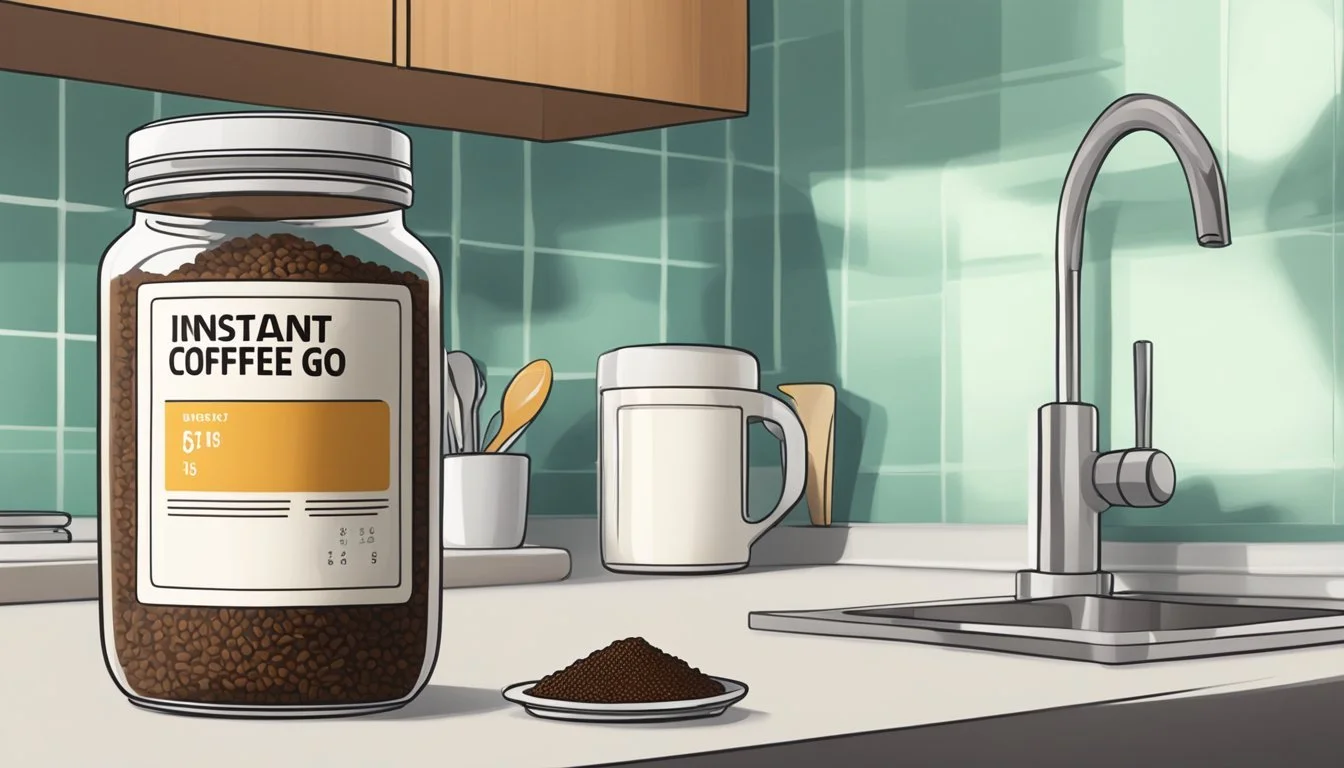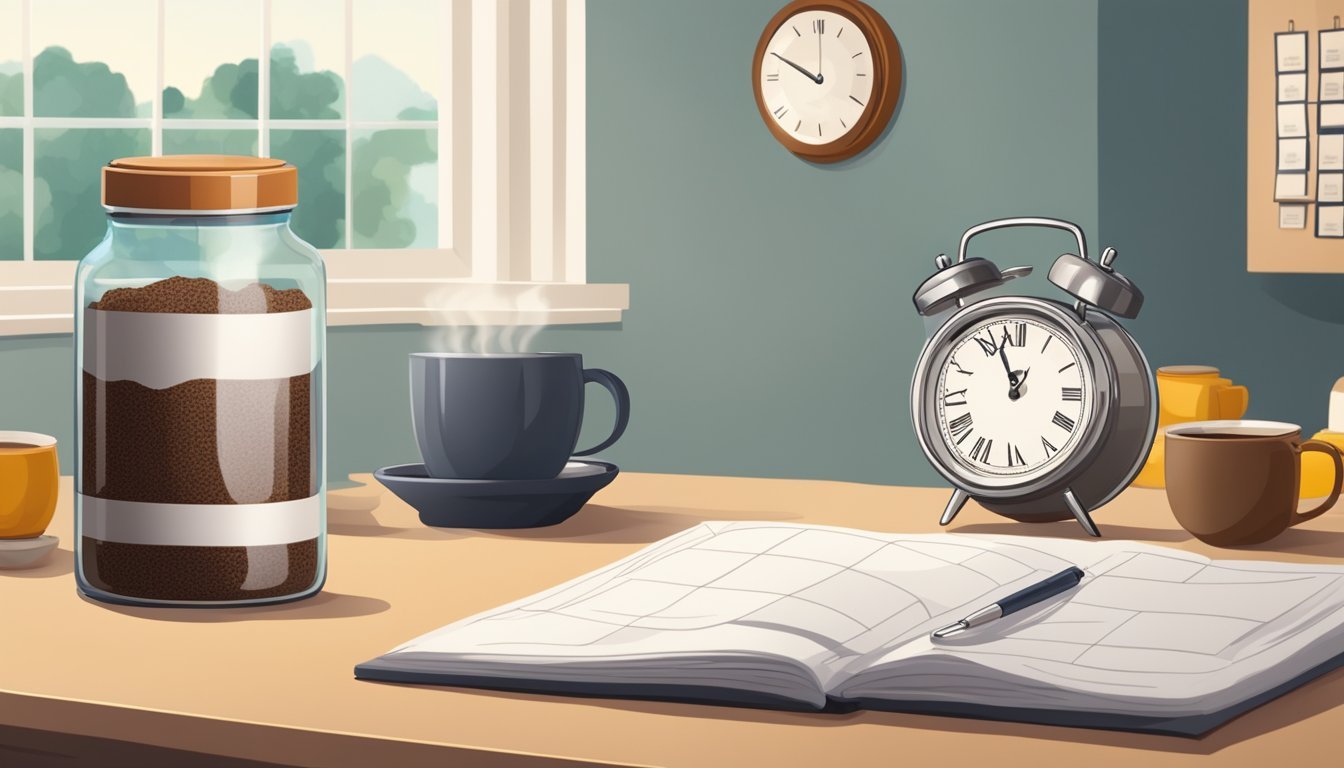Does Instant Coffee Go Bad?
Understanding Shelf Life and Quality Preservation
Instant coffee is renowned for its extended shelf life, a feature that makes it a staple in many pantries. It is a quick and convenient way to enjoy a cup of coffee, especially for those with busy lifestyles or limited access to fresh coffee. Understanding whether instant coffee can go bad is important for consumers looking to maintain the quality and flavor of their coffee.
Despite the convenience and long shelf life, instant coffee can deteriorate in quality over time. It’s a shelf-stable product, meaning that under proper storage conditions, it won't spoil in the way perishable goods do. However, factors such as exposure to air, light, moisture, and extreme temperatures can affect its taste and aroma. As with many food products, the quality of instant coffee may also begin to diminish after the expiration date, although it does not necessarily mean the coffee is unsafe to consume.
Proper storage is key to preserving the freshness and usability of instant coffee. By keeping it in an airtight container in a cool, dry place, the decline in quality can be mitigated. Even though it may not spoil in a traditional sense, instant coffee can lose its characteristic flavors and become less enjoyable to drink as time goes on.
Understanding Instant Coffee
Instant coffee is a beverage derived from brewed coffee beans. It provides a quick and convenient way to make coffee by simply adding hot water or milk.
Composition and Types
Instant coffee begins as regular coffee beans that are roasted and ground before being brewed. The primary difference between instant coffee and ground coffee lies in their physical state and shelf stability. Instant coffee comes in two main types: spray-dried and freeze-dried. Spray-dried is the most cost-effective method, producing finer granules, while freeze-dried tends to retain more of the original coffee flavor and aroma, resulting in a higher quality product. Both types can be found in single-serve packets or larger containers, catering to different consumption needs and preferences.
Production Process
The production of instant coffee involves several steps. First, coffee beans are roasted and ground. Then, they are brewed into a concentrated liquid. Next, the coffee extract is dried by one of two methods: freeze-drying or spray-drying. Freeze-drying involves freezing the coffee extract and then slowly increasing the temperature under vacuum conditions to sublimate the ice into vapor, a process that preserves flavor and aroma. Spray-drying, however, blasts the coffee extract with hot air, creating a fine powder rapidly but may result in a loss of some subtle flavor notes.
Instant Coffee Brands
Several brands dominate the instant coffee market, each offering a range of products that target different audiences. Prominent names include Nescafé, Starbucks VIA, and Folgers, which offer a variety of blends and intensities tailored to specific taste preferences. These brands contribute to the widespread availability of instant coffee, ensuring that consumers can find an option that suits their palate, whether they prefer a mild breakfast blend or a bold, dark roast.
Shelf Life and Expiration
When discussing instant coffee, it is essential to understand that its shelf life significantly exceeds that of other coffee forms. Instant coffee typically has an extended shelf life, ranging from 2 to 20 years when stored properly.
Determining Expiration Date
Manufacturers provide an expiration date or best by date on instant coffee packaging. This date is a conservative estimate of how long the coffee will maintain peak quality. Here are specifics to identify:
Expiration Date: Usually found on the packaging; signifies when the coffee may start to lose its optimal flavor.
Best By Date: Indicates the period during which the instant coffee is expected to retain freshness.
Carefully sealed and unopened jars or packets of instant coffee can be usable for many years past the expiration date, with some lasting nearly indefinitely.
Evaluating Freshness
Several factors can influence the freshness of instant coffee:
Storage Conditions: The product should be stored in a cool, dry place, away from direct sunlight and moisture.
Seal Integrity: Once opened, the lid should be firmly closed to prevent exposure to air and humidity.
To check for freshness, observe smell, clump formation, and color changes—indicators that moisture or air may have compromised the product's quality. Fresh instant coffee dissolves quickly in water, without any off-putting odors or change in appearance.
Storing Instant Coffee
To maintain the quality and extend the shelf life of instant coffee, specific storage conditions are crucial. Proper storage not only prevents spoilage but also preserves the coffee's flavor and aroma.
Ideal Storage Conditions
The ideal storage conditions for instant coffee involve keeping it in a cool, dry place away from direct sunlight. Moisture is a primary enemy of instant coffee, so a sealed container is essential to prevent any humidity from affecting the coffee. An airtight container safeguards the coffee from exposure to air, which can degrade the quality over time.
Effects of Improper Storage
Instant coffee exposed to moisture may develop mold, while contact with excessive air can lead to a loss of flavor and aroma. Additionally, exposure to light and heat can cause instant coffee to stale quickly, diminishing its freshness and resulting in a bland or undesirable taste.
Long-Term Storage Tips
For long-term storage, placing instant coffee in a freezer can significantly extend its life without sacrificing quality. When freezing instant coffee, it's imperative to use an airtight container to avoid any freezer odors being absorbed. If one opts for refrigeration, instant coffee should still be kept in an airtight container to maintain freshness. Whether in a pantry, fridge, or freezer, the container should be tightly sealed and airtight to ensure the best possible preservation of the instant coffee.
Factors Affecting Instant Coffee Degradation
While instant coffee is renowned for its long shelf life, certain environmental factors can accelerate its degradation. Understanding these factors is essential for preserving the quality of instant coffee.
Moisture and Mold
Moisture is perhaps the chief enemy of instant coffee. When coffee granules are exposed to moisture, they become a breeding ground for mold growth. Even small amounts of dampness can initiate this process, jeopardizing the coffee's safety and flavor.
Air and Oxidation
Exposure to air leads to oxidative reactions, which degrade the coffee's quality. Oxidation affects the aroma and taste, resulting in a stale flavor. Airtight containers are crucial for preventing these degradative oxidative reactions.
Light and Heat
Finally, light and heat can adversely affect instant coffee. These elements can cause the coffee to lose its flavor much faster. Storing coffee in a cool, dark place preserves its integrity by slowing down the degradation process.
Signs of Expired Instant Coffee
When assessing if instant coffee has gone bad, one should look out for changes in flavor and aroma, as well as any visual and textural alterations that stray from its original quality.
Changes in Flavor and Aroma
Flavor: A stale taste often signifies that instant coffee is expired. Once robust and full-bodied, the flavor may become dull and less pronounced.
Aroma: Instant coffee that has gone bad often loses its vibrant aroma. The characteristic rich and inviting scent may weaken, becoming bland and sometimes off-putting.
Visual and Textural Alterations
Appearance: An expired product may exhibit a change in color, often looking faded or less vibrant.
Texture: Clumping is a common issue with expired instant coffee. While fresh, it should be loose and free-flowing, but exposure to moisture can cause it to become hard and lumpy.
Health and Safety Considerations
When addressing the longevity and safety of instant coffee, consumers should be aware of the implications of consuming expired products and the importance of storage to prevent contamination.
Consuming Expired Coffee
Instant coffee is a dry product, which gives it a long shelf life. However, over time, it may lose flavor and potency, but typically remains safe to consume if it has been stored properly. Health concerns primarily arise from the degradation of flavor and the potential for moisture to enter the packaging, which could lead to bacteria or fungi growth if left unchecked.
Preventing Bacterial and Fungal Growth
To ensure health safety and maintain the quality of instant coffee, it's vital to store it in a cool, dry place away from direct sunlight and moisture. Proper storage inhibits the growth of bacteria and fungi, therefore extending the shelf life and safety of the product. The following list includes key storage tips:
Keep in an airtight container
Store in a dark, cool cupboard
Avoid humid environments
By adhering to these storage principles, consumers can confidently enjoy their instant coffee well beyond the 'best by' date without compromising on safety.
Recycling and Reusing Outdated Instant Coffee
While outdated instant coffee may not offer the best taste for a morning brew, it can still be a useful commodity around the house. This section explores legitimate and beneficial ways to repurpose your expired instant coffee granules, ensuring nothing goes to waste.
Alternative Uses in the Home
In the Kitchen: Outdated instant coffee still has flavor, making it an adequate ingredient for a marinade. The coffee’s acidity can tenderize meat, and its rich flavor can enhance the marinade's taste profile.
Deodorizing Agent: Coffee’s natural odorous qualities make it suitable as a deodorizer. Placing a bowl of dried instant coffee granules in your refrigerator or closet can help absorb and neutralize unwanted odors.
Cleaning the Drain: A mixture of coffee and boiling water could assist in cleansing your drain. Coffee’s slight abrasiveness helps to scour the pipes, while the flow of boiling water flushes away debris.
Environmentally Friendly Disposal
Composting: Instant coffee is biodegradable and enriches compost by contributing nitrogen, an essential element for plant growth. Incorporating it into your compost bin attracts worms and enhances soil quality.
Steps to Compost Coffee:
Ensure that the coffee is not mixed with other non-compostable materials.
Sprinkle the used coffee grounds onto the compost pile.
Mix thoroughly with other compost matter to aid decomposition.
Frequently Asked Questions
In addressing common concerns, this section provides insightful details on instant coffee's longevity and its effects on caffeine content, alongside comparisons with brewed coffee.
Impact on Coffee's Caffeine Content
When instant coffee passes its expiration date, it may see a decrease in flavor, but the caffeine content remains largely unaffected. Caffeine is a stable compound; thus, even after the 'Best by' date, the caffeine level in instant coffee should stay consistent, assuming proper storage away from moisture and other contaminants.
Differences Between Brewed and Instant Coffee
The fundamental difference between brewed coffee and instant coffee lies in their preparation and shelf life. Brewed coffee should be consumed shortly after brewing to enjoy its best flavor and aroma, while instant coffee offers a longer shelf life, up to years past the expiration date with proper storage. However, one will notice a decline in the taste quality of instant coffee over time that does not imply it has gone bad, only that it might not provide the optimal coffee experience.
Conclusion
Instant coffee is a convenient staple with a long shelf life, typically lasting for years when stored correctly. Its longevity is due to the low moisture content which inhibits bacterial growth. However, flavor and potency can decline over time.
To maximize its shelf life, consumers should adhere to the following storage guidelines:
Keep it dry: Store instant coffee in a cool, dry place, such as a pantry or cupboard.
Airtight is right: Use an airtight container to mitigate oxidation and preserve aroma and flavor.
Guard from light: Exposure to light can degrade the quality of instant coffee; hence, opaque containers are preferable.
It's essential to be aware that instant coffee doesn't ‘spoil’ in the traditional sense, as it doesn't develop harmful bacteria easily. But its sensorial properties, such as taste and fragrance, are subject to change. Even though instant coffee may not technically expire, attentive storage is paramount in retaining its best qualities for as long as possible.








